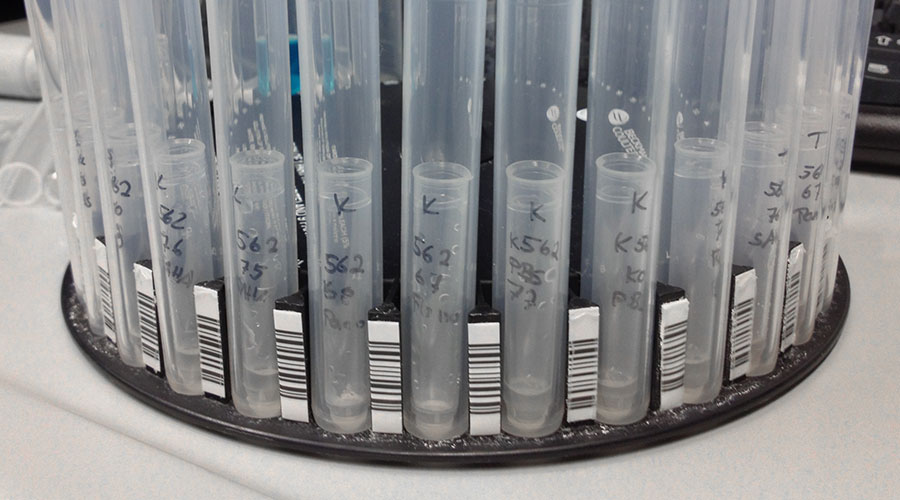
Disturbed waste disposal in leukemia cells
In collaboration with researchers from Germany, Switzerland, America, the working group of PD Dr. Jan Henning Klusmann has succeeded in identifying new therapeutic targets in leukemia. The researchers investigated histone deacetylase inhibitors (HDACi) – substances which have raised great expectations in the fight against cancer, and some of which have already been approved. Results show that HDACi have unexpected effects in leukemia cells.
Histone deacetylases are enzymes that regulate the transcription of genetic material and functions of protein in the cell. Exactly how they work in the context of cancer was not fully understood, but PD Dr. Klusmann has long been interested in these substances. It started with a systematic search for effects in cells under the influence of HDACi, leading to the discovery that these inhibitors block autophagy in leukemia cells. These findings were published in the journal Leukemia (http://www.nature.com/leu/journal/vaop/naam/abs/leu2013264a.html).
Via autophagy, cells consume their own internal structures, thereby recycling cellular proteins and organelles. They use these processes primarily in situations of deficiency. To maintain their state of uncontrolled growth, tumor cells apparently produce a lot of material which must be continuously removed. They therefore react very sensitively to any disturbances in autophagy. By blocking autophagy, it appears that we ‘mash’ tumor cells, leading to their death. This can be achieved with HDACi, but also with other substances.
In the clinic, these findings are of direct importance for treating patients. For a boy with in the second relapse of an acute leukemia after bone marrow transplant, PD Dr. Klusmann saw conventional treatment options. However, the lab tests predicted a good response from this form of leukemia to HDACi. The boy was placed on HDACi treatment and the leukemia was suppressed. The case was published in Pediatric Blood & Cancer (http://onlinelibrary.wiley.com/doi/10.1002/pbc.26062/Abstract), and this therapy approach is now under consideration for clinical trials.